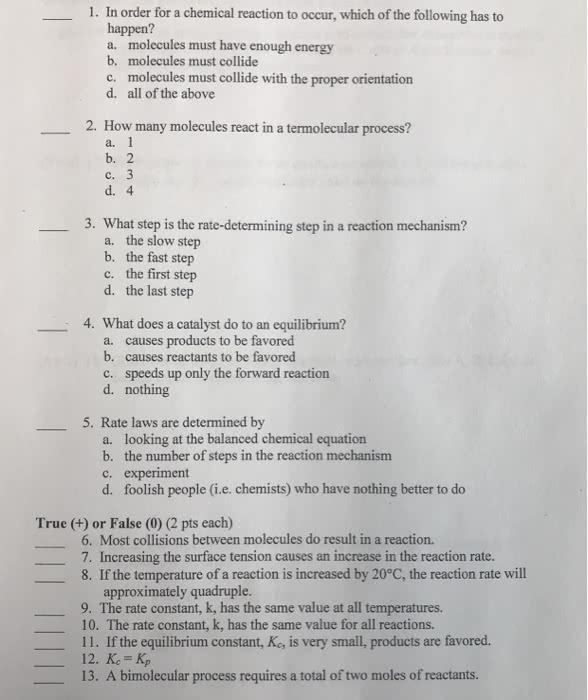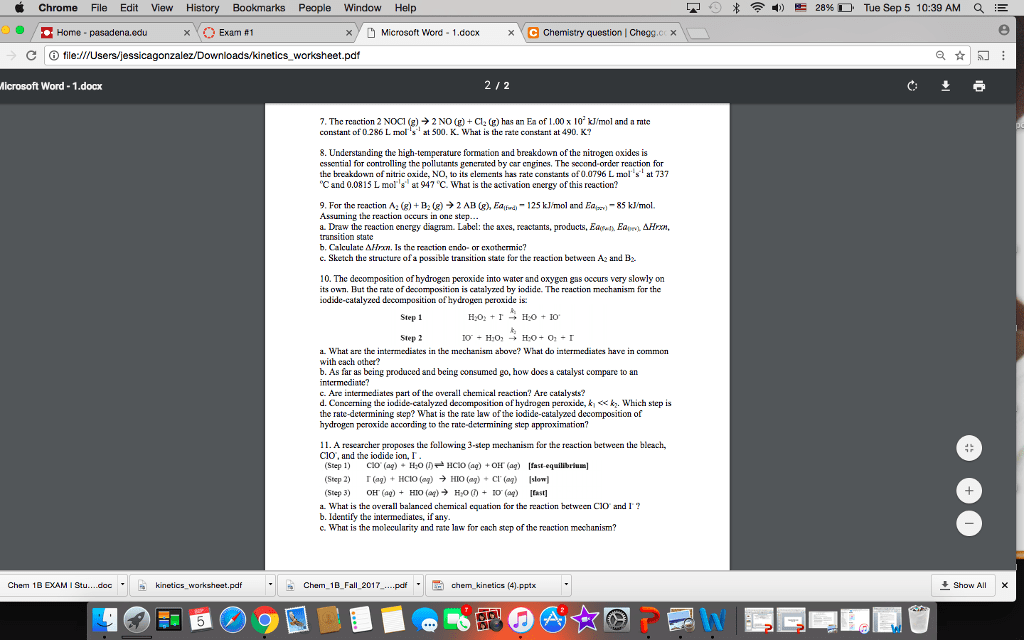CHEM 120 Lecture Notes - Lecture 6: Peroxidase, Titration, Enthalpy

6
7-8: Enthalpy of Formation
- The change of one mole of a substance in its standard state is formed from the
reference forms of the ELEMENTS
o Pure element ∆
�° =
▪ Most stable with at room temp at standard atm pressure
- More stable elements will result in +∆
� and less stable -∆
�
- Associated with the decomposition and rearrangement of reactants/products
Chemical Kinetics: How Reactants Become Products
The Rate Problem – How fast does the process occur? Kinetics is concerned with the speed of
chemical reaction and mechanisms by which they occur
- Mechanisms: step by step sequence of chemical events by which reactants → products
- The rate depends on the mechanism; to understand mechanism, you need to better
understand the rate
The Rate of a Chemical Reaction: Rate of Change of Concentration in Respect to Time
Fig 1.1 – Chemical Kinetics
Adjust the concept of velocity; the change of d is now the change in C, so it’s ∆/∆
General Rate of Reaction: where A, B, C, D are coefficients
−
∆[]
∆ = −
∆[]
∆ =
∆[]
∆ =
∆[]
∆
Measuring Reaction Rates: n = PV/RT → measure amount of gas produced over time
Catalyst: compound that speeds up a chemical reaction
- Peroxidase: helps speed up the reaction of H202 decomposition
2 categories:
Physical – the measurement of monitored gas (e.g. PV = nRT)
Chemical – the direct measurement of concentration (e.g. titration)
Determining & Using an Initial Rate of Reaction:
find more resources at oneclass.com
find more resources at oneclass.com

26
CHEM 120 Full Course Notes
Verified Note
26 documents
Document Summary
The change of one mole of a substance in its standard state is formed from the reference forms of the elements: pure element (cid:1834) = (cid:882, most stable with at room temp at standard atm pressure. More stable elements will result in + (cid:1834) and less stable - (cid:1834) Associated with the decomposition and rearrangement of reactants/products. Kinetics is concerned with the speed of chemical reaction and mechanisms by which they occur. Mechanisms: step by step sequence of chemical events by which reactants products. The rate depends on the mechanism; to understand mechanism, you need to better understand the rate. The rate of a chemical reaction: rate of change of concentration in respect to time. Adjust the concept of velocity; the change of d is now the change in c, so it"s (cid:1829)/ (cid:1872) General rate of reaction: where a, b, c, d are coefficients. Measuring reaction rates: n = pv/rt measure amount of gas produced over time.



